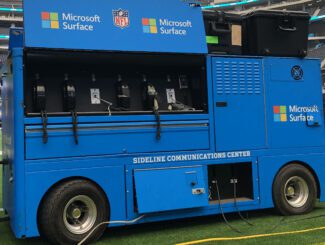
Today, venue owners can leverage hyperconvergence to reduce the costs of the technology deployed in their buildings.
Starting in the late 1990s, enterprise customers seeking to address the rising costs of server infrastructure began seeking ways to load more applications onto individual servers to reduce the space, power, and cooling expenses related to increasing demand for information technology systems. Building on increasingly powerful processors and time-sharing concepts implemented on mainframes by providers such as IBM, enterprise customers began to employ virtualization to run multiple workloads in parallel on a single server. Pioneers in the space included VMWare and Microsoft, two players who dominate the virtualization space today. Virtualization is the foundation of cloud computing and has been enabling efficient scaling of IT Operations for the last 20 years.
In parallel with the development of virtualization, storage area networks (“SANs”) emerged as a way for a collection of servers (a “server farm”) to share disk space on a network attached appliance. The benefit of shared storage was the consolidation of unused space across servers, reducing the total amount of disk space required in the data center. As virtualization technology matured, physical storage devices were virtualized allowing applications on one server to access storage on one or more disconnected servers (“virtual SANs” or “VSANs”).
The combination of virtualized applications and virtualized storage together created the possibility for any application to flexibly use resources of any connected server; memory, processor, and/or storage. In fact, with all applications executing on top of a common virtualization platform (the “hypervisor”) it became possible to optimize performance by eliminating the duplication of common application components and dynamically allocating the use of all connected resources.
The resulting “hyperconverged systems” where applications (“workloads” in hyperconverged speak) run on commodity servers provide a compact, energy efficient platform for today’s enterprise compute requirements.
Venue Operations: The rise of technology
Like data centers, public venues have evolved dramatically over the past 20 years. Venue operations have become increasingly dependent on technology with main telecommunications rooms growing into mini data centers connected to a network of smaller telecommunications closets throughout a building.
Legacy systems which ran without any attached communications infrastructure became connected. Telephone systems which ran on large proprietary PBXs were rendered onto commodity servers. Facility managers implemented applications to manage their building systems (building management systems or “BMS”) developing centralized control of systems including HVAC, lighting, and electrical. Venue security migrated from coaxial connected cameras storing images on tape to network connected surveillance and access control systems relying on servers with large attached storage arrays. Concessionaires migrated away from proprietary point of sale (“POS”) terminals to PC and tablet-based devices connected to server-based concessions management software. Tickets migrated from paper to digital. And venue sales organizations implemented customer relationship management (“CRM”) software to improve sales outcomes with some CRM solutions layered on top of a data warehouse.
Today, every aspect of venue operation relies on servers running in the building or on the cloud. These systems are further dependent on large networks which have compute and storage requirements of their own, demanding more servers.
Managing Infrastructure: The IT professional’s dilemma
When Stadium Tech Report reached out to some of our contacts in the venue space to discuss this article, we heard the same message from many venue IT professionals. Managing a hodge-podge of servers collected over time was a burden. They faced a heterogenous mix of computers dependent on disparate management tools, tied to different security update regimes, and covered by a patchwork of support agreements. Keeping these servers current and secure placed significant demands on their time and budgets.
While some IT managers were resigned that this was just their reality, a few had established plans for consolidating their systems. One operator with experience operating multiple venues who preferred to remain anonymous stated it plainly: “When I take over a building, I spend the next five years trying to consolidate systems onto a single platform with a comprehensive support plan.” The business case for consolidation was simple; consolidation would decrease operating expense. However, the ability to move forward quickly is constrained by capital budgeting requiring that installed equipment reach full depreciation before replacement was palatable.
“When I take over a building, I spend the next five years trying to consolidate systems onto a single platform with a comprehensive support plan.”
If the business case for consolidating servers exists, how did venues end up with a collection of disparate platforms? In most cases, system procurement was decentralized and the various operating units within the venue rarely or peripherally included the IT organization in the procurement process. The expectation was that system vendors would determine what servers were needed, from what vendor they would be sourced, and what type of support agreement would be attached. What followed vendor selection was a request for rack space and requirements for power and connectivity.
The Path Forward: Operational efficiencies
For new venues, the business case is clear. By establishing a compute strategy early in the design phase and enforcing compliance with that strategy across project scopes, the project can achieve project savings and lower Day 2 operating costs. Stadium Tech report partner AmpThink shared that in the last 18 months, they’ve incorporated hyperconverged platforms from Cisco, Dell, and Hewlett Packard Enterprise in four of their projects with platforms delivering between 22 and 95 virtual machines. AmpThink Solution’s Architect Robare Pruyn noted that “While supporting our recent venue projects, hyperconvergence allowed us to quickly spin up and support applications, meeting project schedules without the cost of additional hardware or the complexity of integrating new servers into the data center and/or network.” AmpThink’s Adam Haskin shared that at So-Fi Stadium, “the Hyperconverged platform which currently supports 95 virtual machines replaced dozens of physical servers with all but the physical security applications running on a platform that lives in two data racks.”
For existing venues, hyperconvergence offers the opportunity to reduce the number of servers under management and the resulting operational costs. Physical consolidation reduces space requirements, energy consumption, simplifies securing your server infrastructure, and reduces the number of support contracts. But achieving convergence may require time. Establishing a platform and organizational standards for systems requiring compute resources is the foundation of future efforts. Building the business case for hyperconvergence will require a detailed analysis of your current operating environment and planned system purchases across business disciplines.







